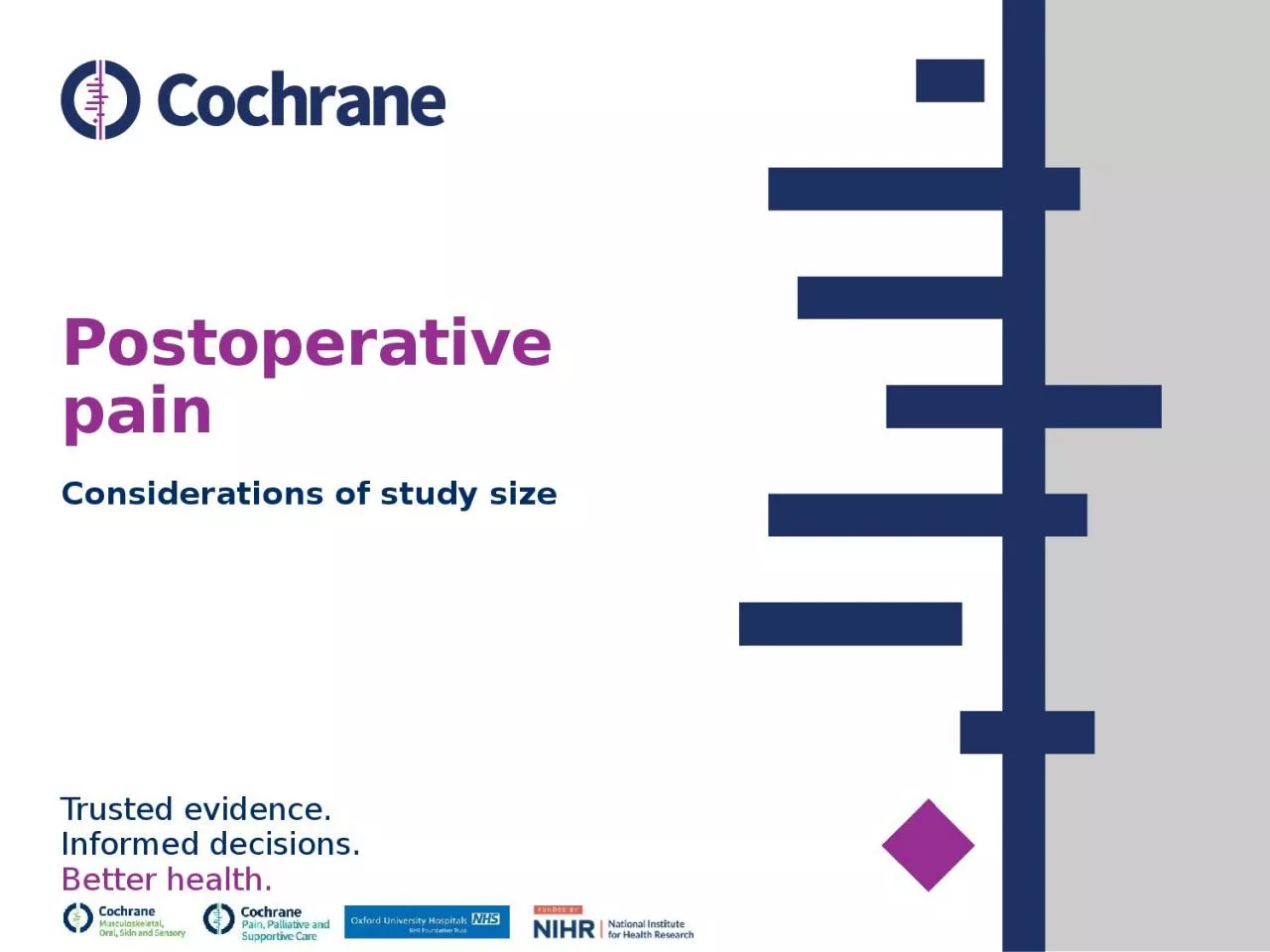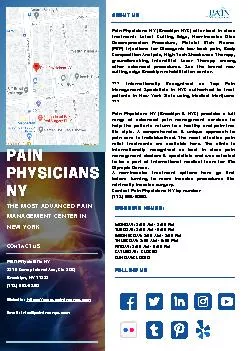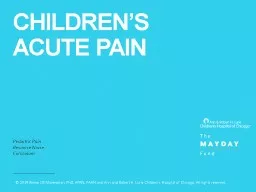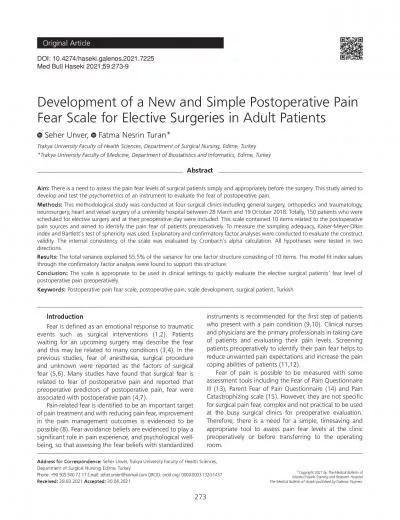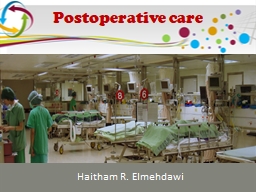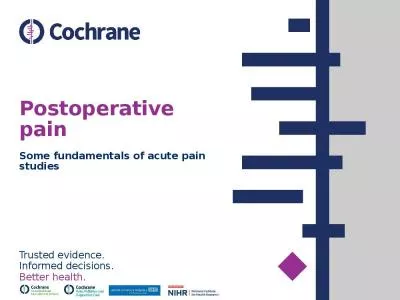PPT-Postoperative pain Considerations of study size
Author : felicity | Published Date : 2024-02-09
Contents 01 Background to study size 02 Examples of treatment group sizes in acute pain 03 Examination random variations with small group size 04 What is small
Presentation Embed Code
Download Presentation
Download Presentation The PPT/PDF document "Postoperative pain Considerations of stu..." is the property of its rightful owner. Permission is granted to download and print the materials on this website for personal, non-commercial use only, and to display it on your personal computer provided you do not modify the materials and that you retain all copyright notices contained in the materials. By downloading content from our website, you accept the terms of this agreement.
Postoperative pain Considerations of study size: Transcript
Download Rules Of Document
"Postoperative pain Considerations of study size"The content belongs to its owner. You may download and print it for personal use, without modification, and keep all copyright notices. By downloading, you agree to these terms.
Related Documents

